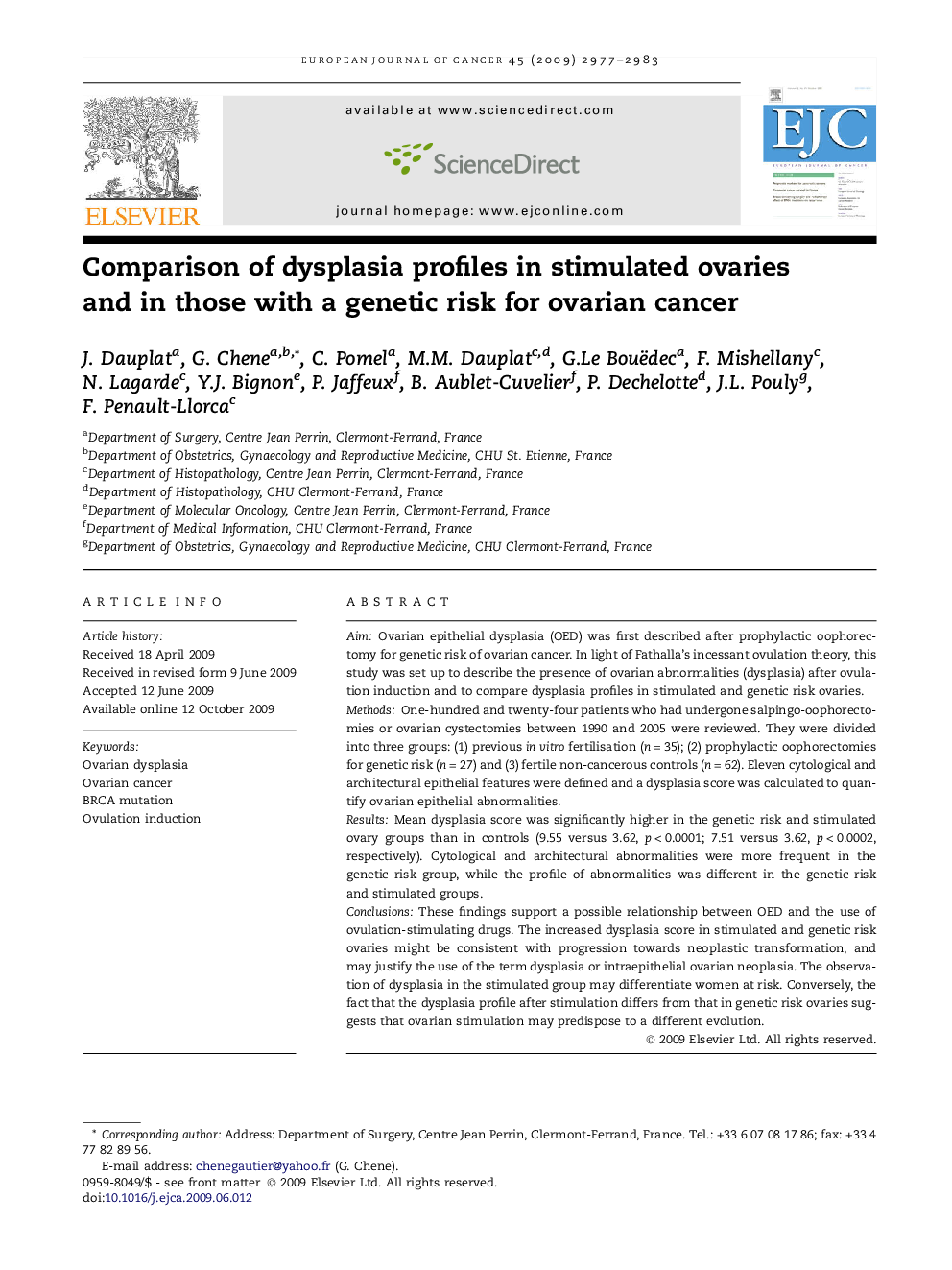| کد مقاله | کد نشریه | سال انتشار | مقاله انگلیسی | نسخه تمام متن |
|---|---|---|---|---|
| 2125195 | 1547221 | 2009 | 7 صفحه PDF | دانلود رایگان |

AimOvarian epithelial dysplasia (OED) was first described after prophylactic oophorectomy for genetic risk of ovarian cancer. In light of Fathalla’s incessant ovulation theory, this study was set up to describe the presence of ovarian abnormalities (dysplasia) after ovulation induction and to compare dysplasia profiles in stimulated and genetic risk ovaries.MethodsOne-hundred and twenty-four patients who had undergone salpingo-oophorectomies or ovarian cystectomies between 1990 and 2005 were reviewed. They were divided into three groups: (1) previous in vitro fertilisation (n = 35); (2) prophylactic oophorectomies for genetic risk (n = 27) and (3) fertile non-cancerous controls (n = 62). Eleven cytological and architectural epithelial features were defined and a dysplasia score was calculated to quantify ovarian epithelial abnormalities.ResultsMean dysplasia score was significantly higher in the genetic risk and stimulated ovary groups than in controls (9.55 versus 3.62, p < 0.0001; 7.51 versus 3.62, p < 0.0002, respectively). Cytological and architectural abnormalities were more frequent in the genetic risk group, while the profile of abnormalities was different in the genetic risk and stimulated groups.ConclusionsThese findings support a possible relationship between OED and the use of ovulation-stimulating drugs. The increased dysplasia score in stimulated and genetic risk ovaries might be consistent with progression towards neoplastic transformation, and may justify the use of the term dysplasia or intraepithelial ovarian neoplasia. The observation of dysplasia in the stimulated group may differentiate women at risk. Conversely, the fact that the dysplasia profile after stimulation differs from that in genetic risk ovaries suggests that ovarian stimulation may predispose to a different evolution.
Journal: European Journal of Cancer - Volume 45, Issue 17, November 2009, Pages 2977–2983